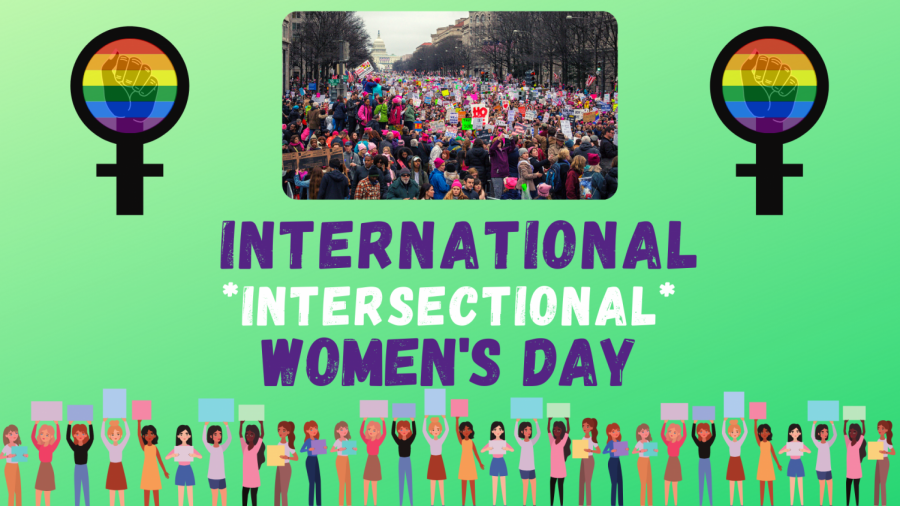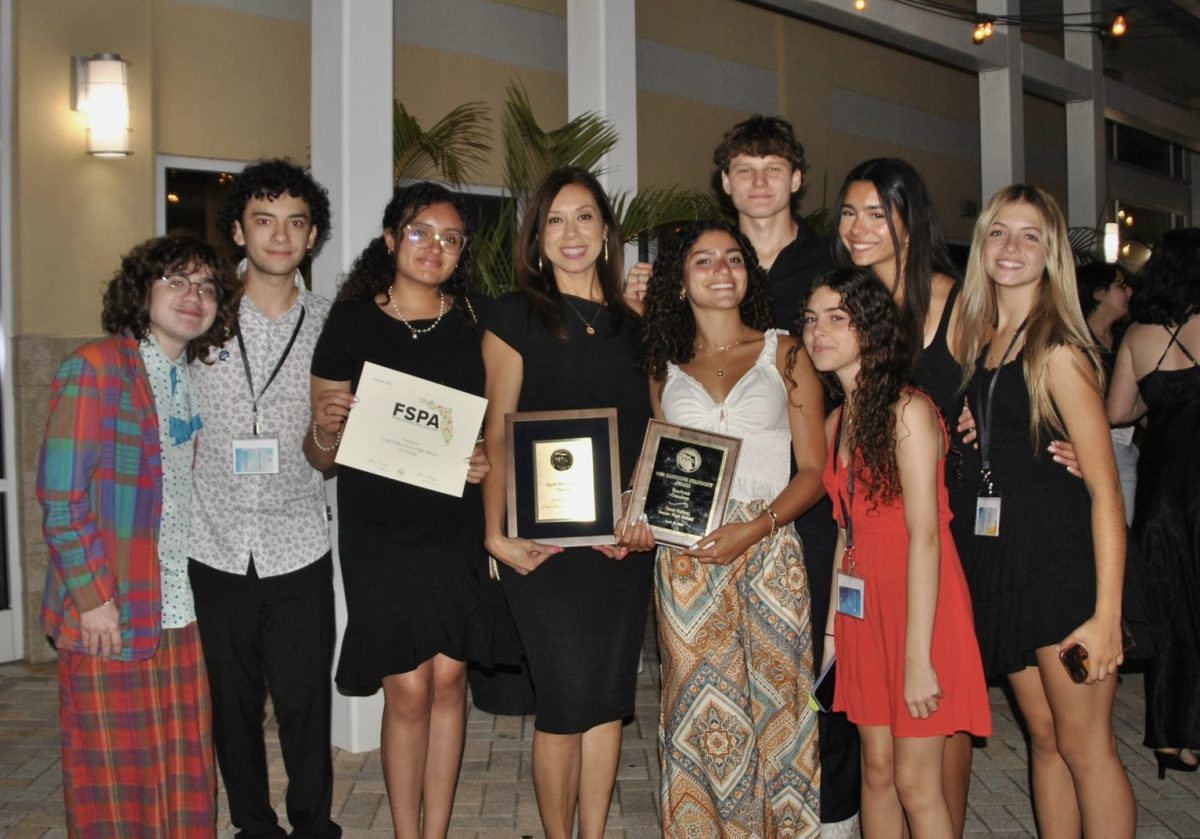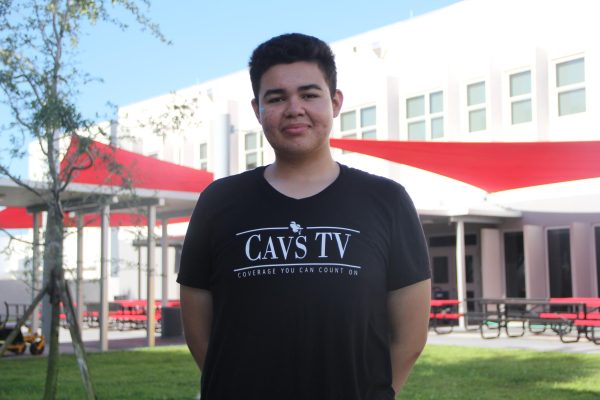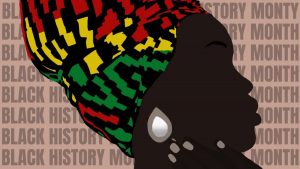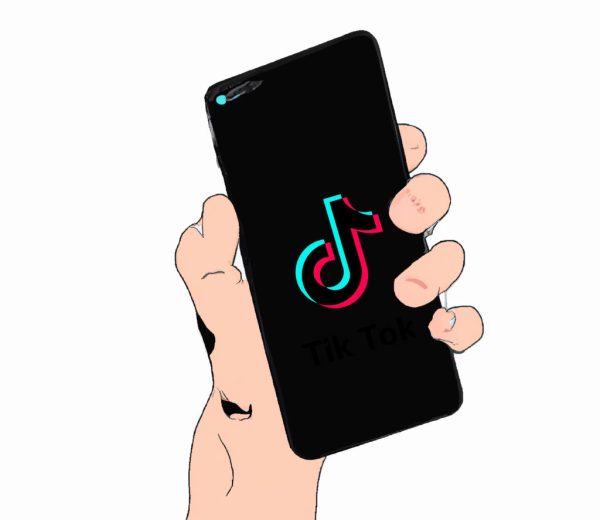International Women’s Day: The Importance of Intersectionalism
It is about time that intersectionality amongst feminists becomes the new normal.
Mar 17, 2021
March 8 is a day designated to commemorate all women who have shattered gender barriers. More importantly, it re-emphasizes that women having the same opportunities as their male counterparts is not as radical as some make it out to be. Though showing solidarity for women should occur every single day of the year, a recurring pattern has come to light when discussions of feminism are brought up. For many self-proclaimed feminists, a crucial piece of the puzzle is missing—the failure of advocating for intersectional feminism, which includes promoting Black women, Indigenous women, Asian women, Latinx women and LGBTQIA+ women.
Feminism can be defined as “the belief in social, economic, and political equality of the sexes.” Now, the word intersectional did not exist until a professor, Kimberlé Crenshaw, used it when discussing the complexities of the multi-dimensional topics of race, nationality and gender. In 1989, she published a now famous journal called “Demarginalizing the Intersection of Race and Sex.” This breakthrough piece provided a new way of observing how trials of minorities are run, as she points out how “the law seemed to forget that Black women are both Black and female, and thus subject to discrimination on the basis of both race, gender and often, a combination of the two.”
Now, what does this even mean? Essentially, the blatant disregard for Black woman’s womanhood in courts was apparent as she was only thought of as the color of her skin; hardships of being both Black and a woman did not faze judges or lawyers. After years of pioneering for women, it seemed as though the women who received the positive effects of these endless protests were really only white women.
“I feel like, in terms of intersectional feminism, white women and girls should take into account the situations of their minority counterparts. It is certainly a beautiful thing when women support women to empower themselves in the ways they deserve, so it is essential that those in the majority provide support in the right way to help all women regardless of their race, ethnicity, sexual orientation, gender classification and social class,” junior Lawrence Stampino-Strain said.
Of course, we cannot minimize what feminism has done for us over the course of just a few decades. However, toxic white feminism is an all too real movement that has taken its toll on what feminism is all about. Toxic white feminism has been the systematic ideology that enables white women to promote their grievances rather than collective ones. One example that highlights the toxicity of such a phenomena was during the protests occurring to demand justice for Nia Wilson, a Black woman who was murdered by a white man back in 2018. At the time, Black activists—especially Black feminists—noted the failures of second wave feminism for their own and the response of many white feminists was far from what it should have been.
Rather than protesting alongside their fellow feminists, white activists called out the “blatant attacks” by them on their own accomplishments. It was yet another eye-opening revelation on how minorities were completely dismissed if a version of a feminist movement was not “on brand.”
The severity of the issue continues to grow leading to many losing sight of how any one person who identifies as a women must be included in the evergrowing feminist movement. Often, certain minority groups are excluded within modern understanding of feminism. Terms have even been created for non-intersectional feminists to self-identify their own definition of feminism, an example being the trans-exclusionary radical feminist, or TERF.
It is important to be inclusive because that’s the whole point of feminism. You can not pick and choose who you want equality for. Everybody deserves to have equal rights and representation. It is so contradicting to not represent a certain group and exclude them from the movement,
— junior Stephanie Andrade
The very definition of feminism is to protect and advocate for equal rights for all, including ALL those who identify as women. Time and time again, we have seen the exclusion of trans-women which further perpetuates violence and discrimination towards people who are every bit as feminine and womanly as those assigned the sex at birth. Not including trans-women in feminist efforts removes them from the feminist narrative, which they are very much a part of. Excluding women who were not assigned the sex at birth limits the femininity of a woman to her reproductive system. Only seeing women as a vessel to reproduce eliminates the many aspects of gender that make the concept so complex. Additionally, it enables society to maintain the image of women being more emotional or fragile, thus they could not prosper in many fields of work.
Intersectionality, while incredibly important to raise awareness about, requires action to continue on this movement towards inclusivity. The primary way others can take part in intersectional feminism is by educating themselves and others. We must generate a new kind of universalized feminism that understands how not all women face the same struggles and how some have to face even more prejudice than just being a woman. Then once that can be achieved, we must all band together to continue fighting for equality and equity across the board.
The system of oppression that is ingrained in our government and public works has ensured a wave of stagnant advancement for a lot of women. Making it clear and taking actions that reflect the power womanhood has through acknowledging oppression, racism, sexism and prejudice is the only way we can ensure that our feminism does not leave anyone behind.


